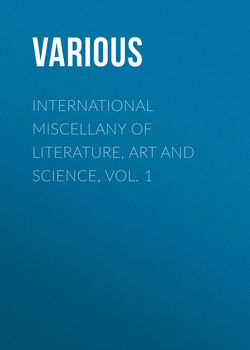Читать книгу International Miscellany of Literature, Art and Science, Vol. 1 - Various - Страница 2
THE WHITE LADY
ОглавлениеThe readers of The International may have seen some account of an apparition said to have been seen recently in the royal palace at Berlin, and known under the name of the "White Lady." M. Minutoli, lately chief of the Police at Berlin, has been amusing himself by looking up the history of this visitant from the unknown world, and has published a variety of curious particulars respecting her, drawn in a measure from documents preserved in the royal archives, as well as from old-time chronicles and dissertations, Latin and German middle age doggerel, and the records of jurists, historians and theologists. Several persons are designated in the early history of the family of Hohenzollern as that unquiet soul who for some three hundred years has performed the functions of palace-ghost. Many writers agree that she was a Countess named Orlamünde, Beatrice, or Cunigunde, and that she was desperately in love with Count Albert of Nuremberg, and was led by her passion to a crime which is the cause of her subsequent ghostly disquiet. Mr. Minutoli proves that this lady cannot be the same that alarms the palace with her untimely visitations. The accounts of the White Lady ascend to 1486, and she was first seen at Baireuth. Subsequently two ghosts were heard of, one white and one black. They were several times boldly interrogated and interesting discoveries arrived at. In 1540, Count Albert the Warrior laid in wait for the apparition, seized it with his powerful arm and flung it head over heels down into the castle court-yard. The next morning the chancellor, Christopher Hass, was found there with his neck broken, and upon his person a dagger and a letter proving him to have had treasonable designs. Notwithstanding the spirit has several times been thus compromised, it has maintained itself to the present day. It was first seen in Berlin January 1, 1598, eight days before the death of the Prince Royal John George. When the French invasion took place, it returned to Baireuth and was patriotic enough to take up its abode in the new chateau which had never been occupied before the arrival of the French officer. Even Napoleon called the place ce maudit chateau, on account of its mysterious inhabitant, and had to give up his lodgings to the ghost. He stopped in the chateau on his way to Russia but when he returned next year he avoided passing the night there. With regard to the last appearance at the palace at Berlin just before the late attempt on the life of the king, and which has been described as "a fearful apparition of a White Lady dressed in thin and flowing garments, moving slowly and silently around and around the fountain to the terror of a corporal standing near the entrance to the silver chamber," M. Minutoli proves it to have been an old woman once a cook at the chateau who has since lived there and is known, by the nickname of Black Minna.
* * * * *
